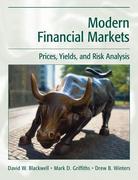Question
Please only answer D I, II, and III. A,B, and C are solved. Predicting Boston Housing Prices. The file BostonHousing.csv contains information collected by the
Please only answer D I, II, and III.
A,B, and C are solved.
Predicting Boston Housing Prices. The file BostonHousing.csv contains information collected by the US Bureau of the Census concerning housing in the area of Boston, Massachusetts. The dataset includes information on 506 census housing tracts in the Boston area. The goal is to predict the median house price in new tracts based on information such as crime rate, pollution, and number of rooms. The dataset contains 13 predictors, and the response is the median house price (MEDV). Table 6.9 describes each of the predictors and the response.
TABLE 6.9 DESCRIPTION OF VARIABLES FOR BOSTON HOUSING EXAMPLE
CRIM Per capita crime rate by town
ZN Proportion of residential land zoned for lots over 25,000 ft2
INDUS Proportion of nonretail business acres per town
CHAS Charles River dummy variable (= 1 if tract bounds river; = 0 otherwise)
NOX Nitric oxide concentration (parts per 10 million)
RM Average number of rooms per dwelling
AGE Proportion of owner-occupied units built prior to 1940
DIS Weighted distances to five Boston employment centers
RAD Index of accessibility to radial highways
TAX Full-value property-tax rate per $10,000
PTRATIO Pupil/teacher ratio by town
LSTAT Percentage lower status of the population
MEDV Median value of owner-occupied homes in $1000s
a. Why should the data be partitioned into training and validation sets? What will the training set be used for? What will the validation set be used for?
b. Fit a multiple linear regression model to the median house price (MEDV) as a function of CRIM, CHAS, and RM. Write the equation for predicting the median house price from the predictors in the model.
c. Using the estimated regression model, what median house price is predicted for a tract in the Boston area that does not bound the Charles River, has a crime rate of 0.1, and where the average number of rooms per house is 6? What is the prediction error?
d. Reduce the number of predictors:
i. Which predictors are likely to be measuring the same thing among the 13 predictors? Discuss the relationships among INDUS, NOX, and TAX.
ii. Compute the correlation table for the 12 numerical predictors and search for highly correlated pairs. These have potential redundancy and can cause multicollinearity. Choose which ones to remove based on this table.
iii. Use stepwise regression with the three options (backward, forward, both) to reduce the remaining predictors as follows: Run stepwise on the training set. Choose the top model from each stepwise run. Then use each of these models separately to predict the validation set. Compare RMSE, MAPE, and mean error, as well as lift charts. Finally, describe the best model.
Step by Step Solution
There are 3 Steps involved in it
Step: 1

Get Instant Access to Expert-Tailored Solutions
See step-by-step solutions with expert insights and AI powered tools for academic success
Step: 2

Step: 3

Ace Your Homework with AI
Get the answers you need in no time with our AI-driven, step-by-step assistance
Get Started


